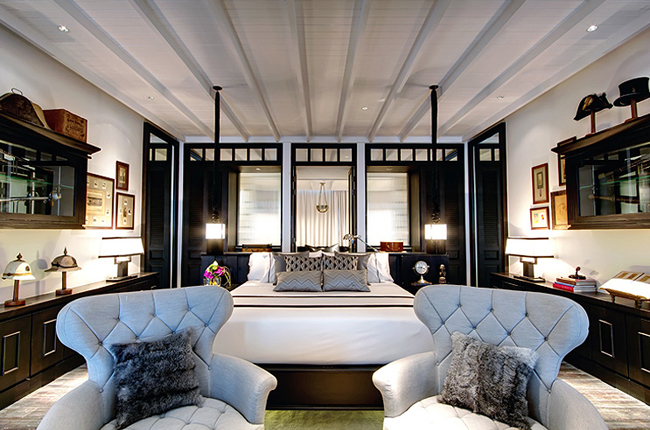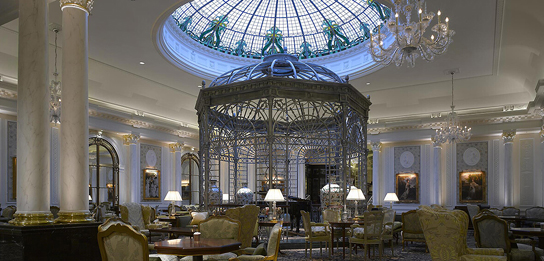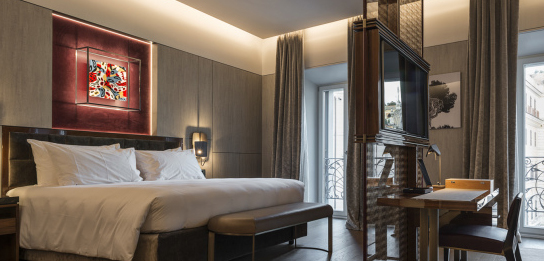
Provided Courtesy of BLLA
Hotels haven’t changed too much since Joseph and Mary arrived at the inn in Bethlehem and the clerk told them that their reservation had been lost.
The hotel industry, of which started with boutique hotels, is closely linked to civilizations, periods, and nowadays, generations.
The first wave of facilities offering guests accommodations are evident through biblical and medieval times. Enterprising Greeks developed thermal baths in villages designed for rest and recuperation. Not to be outdone, the imaginative Romans built mansions to provide accommodation for travelers going away for religious retreats. The creative Romans even expanded their hospitality and developed thermal baths in England, Switzerland and the Middle East. Shortly after, caravanserais (road side inns) appeared, providing a resting place for caravans along Middle Eastern routes.
Around 1200, staging posts for travelers and stations for couriers were set up in China and Mongolia. Competition was fierce, and the competitive edge went to the enterprise that provided the best services and comfort for the guests as well as their guest’s horses.
In 1705, César Ritz opened the amazing 58 room one-of-a-kind boutique hotel at Place Vendôme and he became, to quote the famous phrase of King Edward VII, the "king of hoteliers and hotelier to kings".
In 1822, in Venice, artist Giuseppe Rubino was passionate to create a place of interest for travelers to visit and he transformed an old palace into a hotel and gave it his name, "il Rubino". As trains began to replace horse-drawn transport, trail way inns for stage coaches started to decline.
In 1880, the elegant 96 room Sagamore Hotel on Lake George in the state of New York delivered an amenity that awed every guest, as it was the very first to provide electricity in every one of its guest rooms.
The early years of the twentieth century were rich in new hotels which rapidly grew into a competition of prestige. Edouard Niiermans, the "architect of palaces", transformed the Villa "Eugenie", the summer residence of the Emperor Napoléon III and his wife Eugénie de Montijo, in 1900. In 1905, he built l'Hôtel du Palais in Biarritz. In 1913 his "Négresco" was opened in Nice, in the presence of seven kings.
In Madrid, King Alphonse XIII was anxious that the capital should have a prestigious hotel of originality and character. Seville paid its own homage to the king by opening a splendid lodging house, constructed by the best known architect, the Alphonso XIII. Not to be outdone, Barcelona inaugurated its own stylish hotel in 1919. This was equipped with an unheard of luxury at that time, bathrooms with hot as well as cold water!
We could continue to note, among many other independent one-of-a-kind hotels with an emphasis on style and service built in the same period, such as the Savoy in London, the Beau Rivage Palace in Lausanne, le Négresco in Nice, the Métropole in Brussels, the Plaza-Athenée and l’Hôtel de Crillon in Paris, and of course the King George Hotel in Athens was now offering a chic dining experience.

Fast forward to the 1940’s & 50’s and the proliferation of chain hotels was quickly multiplying with the likes of Holiday Inn, Marriott, and Hilton. To separate itself from all the other chains, Westin had the fresh idea to be the first to offer 24-hour room service.
Little did anyone take note at the time. The 1940’s and 50’s also produced the interesting and one-of-a-kind hotels in places like Ocean Drive on Miami Beach. Rivalry of style and services amongst hoteliers created the foundations of the Beacon Hotel, Cardozo, Colony, The Breakers, and The Century Hotel, among many more boutique hotels. Their fascinating styles, entertaining food and beverage offerings, and among all else, their attention to detail, was actually something travelers had always expected and looked forward to the experience.
During the 1960’s and 1970’s America and the Western world further commoditized and factory style reproduced almost everything possible. Including the second wave of hotels. Cookie-cutter hotels littered skylines, business centers, and vacation destinations. Scientists quantified exact scripts for taking reservations, cleaning rooms, and the most efficient way to serve their consumers (soon to be transformed into addicted point earners) which were formerly known as guests.
In the industrial-era, hotels were stiff establishments, reproduced by habit and targeting their customers by incomes. Now the most astute organizations are focusing on groups of like-minded folk who, at least for a few nights, want to live their fantasy and fulfill their lifestyle imagination as who they are. Or who they would like to be. Unlike most communities, hotels are transitory, liberating guests of responsibility or the need for personal consistency.
According to STR, there are more than 7,500,000 hotel rooms. Today, the largest OTA is worth more than the three largest hotel chains combined. As YouTube has sidestepped the major networks, and Uber has become the world’s largest transportation company, independent boutique hotels remain a place where guest’s comfort and enjoyment still remain the primary concerns.
The third wave of lodging facilities no longer corresponds to the hotel definition: “An overnight lodging accommodation for travelers.”
Nowadays, architects, designers, developers, engineers, managers, guests, city administration, neighbors and more are conscious that taste of guests couldbe different, according to their wishes or needs. Hotel specialists and creative entrepreneurs analyze and imagine new trends, define better criteria, and adjust standards in order to improve quality of experience in hotels. In the third wave, the competitive hospitality market of suppliers is definitely more and more able, combining savoir faire and imagination to offer their guests an ultimate "a la carte" environment.
Twenty years ago, independent high style boutique hotels, owned and operated by romantics, seemed like creative and non-threatening competitors. Since then, every major hotel chain has either acquired and or created a string of hotels that refresh and bring vitality into their portfolios.
To the delight of each newly recognized boutique hotel and resort in one of the world’s premier destinations, the norm is continuously being raised, and not just in terms of architecture and design. Hotels were the place you stayed when you had to travel. Now authentic boutique hotels have brought back the desire to travel.
Interesting boutique hotels, especially in the world’s most magnetic locations, now distinguish themselves not just by being individual but by being the best – no exception.
The re-evolution of boutique hotels now stretches from cosmopolitan capitals to historic small towns, to just about anywhere interesting style and service can enhance a community.
The Fendi Rome, Siam Bangkok, D2 Nairobi, Las Alcobas Mexico City, and Le Place D’Armes Montreal are all boutique, and all are the archetype mentors in their respective regions. Some, such as the Hotel Healdsburg have out-done the customary hotel model and morphed into something, which for want of a better depiction, can be described as a boutique destination hotel.

The choice and the quality of the authentic boutique, both hotel and resort, is incessantly on the increase. And the winner of this ongoing ‘genuine’ and ‘significant’ competition is of course, the guest.
Written by: John Sears, Partner, Boutique Hotel Advisors Written exclusively for BLLA. All rights reserved. Reprint by permission only.


